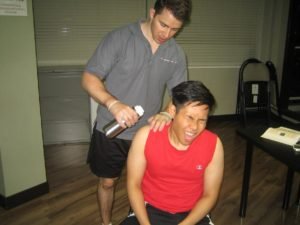Millions of individuals every year die from fire and burn injuries. It is important to note that burns are one of the leading causes of injuries among children. Burns can be caused by scalding from cooking oil or hot liquids, exposure to flames or overexposure to the sun. A burn can also be electrical in nature in instances when a young child bites an electrical cord or chemical such as spillage of bleach on the skin or swallowing household cleaners.
Care for minor burns
- Move the individual away from the source of heat and take away any scorched clothing, except clothing that is fixed in the burn site.
- Run cool water over the burn or place a clean, cold compress until the pain subsides. Do not use butter or other forms of grease as well as ice.
- Remove tight clothing or jewelry around the burned area and apply a clean bandage. An antibiotic cream can be applied as well.
When to seek medical care

It is important to seek immediate emergency care for severe burns and those that involve the mouth, hands, eyes and genital area even if they appear minor. In case a burn covers a substantial area in the body, seek medical care right away. Medical attention is required if the individual has the following symptoms associated to a burn:
- Pus-like or foul discharge
- Fever
- Redness of the skin
- Severe swelling
- Blister filled with brownish or green fluid
- Burn that does not heal in 10 days to 2 weeks
Do not attempt to break blisters from a burn and avoid removing clothing that is stuck to the burned skin. Make sure that the burned areas are elevated to minimize the swelling.
You should know what to do in case you or your clothing catches fire. You have to stop (do not run), drop to the floor and roll but make sure to cover your face and hands while smothering the flames.
Electrical and chemical burns
When it comes to chemical and electrical burns, call for emergency assistance. You have to assess the scenario to ensure that the individual is no longer in contact with the source. For electrical injuries, do not approach the individual until the power source has been turned off.
Preventive measures
- It is recommended to install smoke detectors and ensure that they are functional and replace the batteries every six months.
- When cooking, the handles of pots must be turned towards the rear of the stove and do not leave the pans unattended.
- Instruct children to avoid chemicals and hot substances. If young children are around, utilize safety latches at home.
- Do not leave hot cups of coffee on tables or the edges of the countertops.
- Do not carry hot food or liquids close to a child or while holding a child.
- Store lighters and matches out of children’s reach in a locked cabinet.
- When serving food or beverages to a child, always check the temperature first especially those that are heated in a microwave.
- Scalding can be prevented by keeping the setting of the water heater at 120-125 degrees F. Make sure that you will test the bath water first.
- A fire extinguisher must be readily available especially in the kitchen.
- Unused electric outlets should be covered with safety caps and replace worn, damaged or brittle electrical cords.
- Do not douse grease fire with water since it will only spread the fire.
